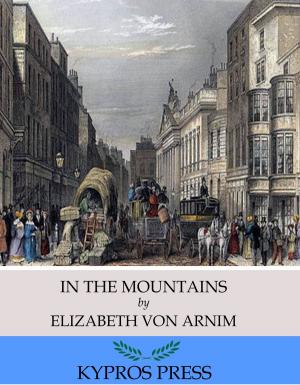| Author: | Anonymous | ISBN: | 9781619820760 |
| Publisher: | Charles River Editors | Publication: | January 13, 2012 |
| Imprint: | Language: | English |
| Author: | Anonymous |
| ISBN: | 9781619820760 |
| Publisher: | Charles River Editors |
| Publication: | January 13, 2012 |
| Imprint: | |
| Language: | English |
The Story of the Ere-Dwellers -- also known as the Eyrbyggja Saga -- was originally written in Icelandic (that is, in Old Norse) sometime around the middle of the 13th century. The original author is unknown, although some scholars have suggested a connection with the author of the Laxdaela Saga. The work was translated by William Morris, a well known fantasist, architect, and political firebrand. The Eyrbyggja saga is one of the Icelanders' sagas. The name means the saga of the inhabitants of Eyrr, which is a farm on Snæfellsnes on Iceland. The name is slightly misleading as it deals also with the clans of Þórsnes and Alptafjörðr. The central character who should have given his name to the saga is Snorri Þorgrímsson or Snorri goði, as he is better known. The saga begins at the time of Iceland's settlement, but most of the events, such as the adventures of Styrbjörn the Strong, take place towards the end of the 10th century and the early 11th century. Even if it does not compare artistically to Egils saga, Njál's saga and Laxdæla saga, it is an entertaining tale. There is internal evidence that the author of the saga knew of the Laxdæla saga and Egils saga, and it was written fairly late in the history of saga writing. However, the main interest of the saga is to trace a few key families as they settled Iceland, rather than to focus on a single hero. It has a certain historic credibility with the exception of a few supernatural events such as the haunting at Fróðá and it is valuable because of its author, while clearly Christian, evinces an interest in pagan practices. The hauntings occur after the death of a völva, and they mainly consist of visions of animals rising up through the floor and dead men coming into the house to warm themselves by the fire. The Saga also includes several references to the colonization of Greenland and one to Vinland- named as Vinland the Good. Eyrbyggia saga has survived in a number of MSs from the 14th century and in a fragment from the late 13th century.
The Story of the Ere-Dwellers -- also known as the Eyrbyggja Saga -- was originally written in Icelandic (that is, in Old Norse) sometime around the middle of the 13th century. The original author is unknown, although some scholars have suggested a connection with the author of the Laxdaela Saga. The work was translated by William Morris, a well known fantasist, architect, and political firebrand. The Eyrbyggja saga is one of the Icelanders' sagas. The name means the saga of the inhabitants of Eyrr, which is a farm on Snæfellsnes on Iceland. The name is slightly misleading as it deals also with the clans of Þórsnes and Alptafjörðr. The central character who should have given his name to the saga is Snorri Þorgrímsson or Snorri goði, as he is better known. The saga begins at the time of Iceland's settlement, but most of the events, such as the adventures of Styrbjörn the Strong, take place towards the end of the 10th century and the early 11th century. Even if it does not compare artistically to Egils saga, Njál's saga and Laxdæla saga, it is an entertaining tale. There is internal evidence that the author of the saga knew of the Laxdæla saga and Egils saga, and it was written fairly late in the history of saga writing. However, the main interest of the saga is to trace a few key families as they settled Iceland, rather than to focus on a single hero. It has a certain historic credibility with the exception of a few supernatural events such as the haunting at Fróðá and it is valuable because of its author, while clearly Christian, evinces an interest in pagan practices. The hauntings occur after the death of a völva, and they mainly consist of visions of animals rising up through the floor and dead men coming into the house to warm themselves by the fire. The Saga also includes several references to the colonization of Greenland and one to Vinland- named as Vinland the Good. Eyrbyggia saga has survived in a number of MSs from the 14th century and in a fragment from the late 13th century.















